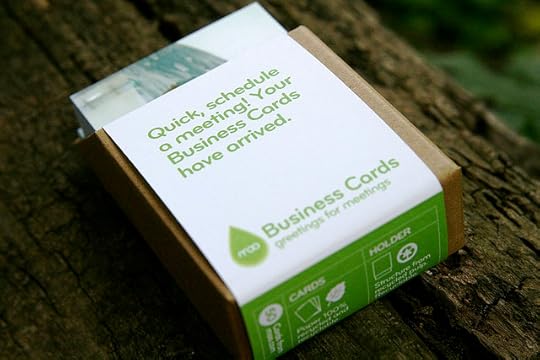Ryan Lilly's Blog, page 3
February 19, 2014
The When & Where of Entrepreneur Training
Entrepreneurs work 24/7 and may be spread geographically throughout your local ecosystem. Finding the right time and place to schedule training within your incubator or startup community can be difficult.

photo credit: wohlford via photopin cc
Programming should be:
1. Across the Map – Don’t have workshops take place only within the incubator, but throughout the startup community as well.
(For rural communities, consider offering online webinar sessions.)
Switch-up your physical programming locations from time-to-time — this may just keep things fresh, inspire creativity for the participants, and expose more of your community to what you do (“Hey, I wonder what those people are meeting about over there? We should go check it out!”)
2. Across the Calendar – Programming should be held throughout the year, throughout the month, and throughout the week. Maybe some of your entrepreneurs are only available on the weekends. Perhaps some migrate north/south for part of the year. Others might be particularly busy during the holidays. When setting dates for programming, make them work for the entrepreneur — not just for you.
3. Around the clock – Entrepreneurs can’t always make sessions held Monday-Friday, 8am-5pm. Offering early-morning, afternoon, or evening sessions may also be necessary.
So often incubators and other entrepreneur-focused service providers will schedule lectures only later to cancel them due to low attendance.
When this happens, you should be asking yourself at least two questions (very similar to the ones that entrepreneurs ask themselves about their startups)…
1. Is there demand for what you are providing?
Are you providing the kinds of programming opportunities YOU think they need — or do you provide needs-based programming — focusing instead on what the ecosystem expresses and/or demonstrates a need for? How do you find out what the ecosystem needs? You ask them.
2. Are you providing it in the right way? (Across the map, across the calendar, and around the clock?)
The post The When & Where of Entrepreneur Training appeared first on Ryan Lilly's Startup Blog.
February 17, 2014
The 7 Sins of Personal Branding
When you’re building a personal brand, there are some things you will want to avoid. Disclaimer: The following is by no means an exhaustive list.

photo credit: massdistraction via photopin cc
1. Not having cards (or other take-aways) – In a world with LinkedIn, some question how relevant business cards are these days. Still, if you meet someone in person, how will they remember where to find you online? Even minimalist business cards (Moo Cards) are great to have handy.
2. Not sending a follow-up - Always send a follow-up after a meeting. Better yet, send a thank you. Better still, if this is your first time meeting someone, make it a physical thank you card .
3. Not having a website – Domains are cheap on sites like GoDaddy. Register a professional one — preferably in your own name (I had to wait 10 years for RyanLilly.com to become available). Create an email at that domain name for an even-greater professional touch (ryan@ryanlilly.com)
4. Not engaging on social media – Having a social media presence is one thing. Engaging on social media is another (and this does not mean simply messaging friends on Facebook). Get signed-up on Twitter, follow people in your industry, and start active conversations with them. Create a Pinterest portfolio. Join a subreddit based on your interests. Always be IN the conversation, not on the outside LOOKING IN.
5. Not having a sticky bio – Keep you bio concise and sticky. Phrased differently, keep it to the point and make sure it’s something people want to share. If you’re not a great writer, check out bio creation and editing services on a site like Fiverr.
6. Not consistently creating something (ex. content creation) – Whether it’s a weekly contribution to your blog, or a regular addition to your portfolio, make sure you are creating something new on a regular basis. Personal brands that center on innovation and being a game-changer are the ones that stand-out. And speaking of standing-out…
7. Not differentiating your brand – Make sure your personal brand is DIFFERENT. While it’s OK to model your personal brand after others, it should never be a duplicate. It should be genuine, authentic — YOU.
And maybe being you is a little weird (We Are All Weird ).
).
Remember:
The biggest sin in personal branding is not creating a personal brand at all.
So get to it!
The post The 7 Sins of Personal Branding appeared first on Ryan Lilly's Startup Blog.



